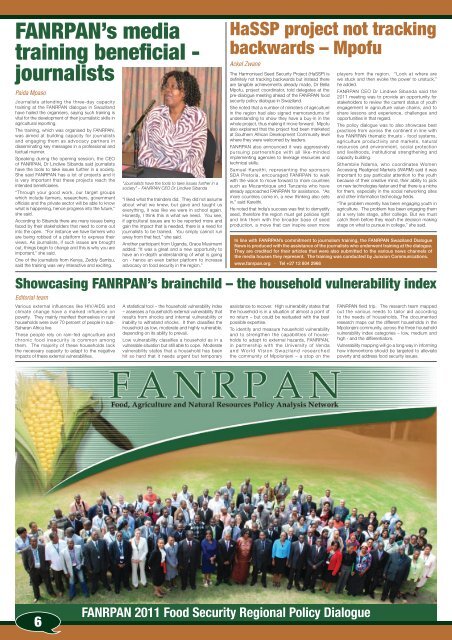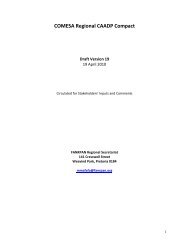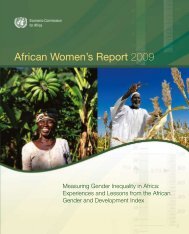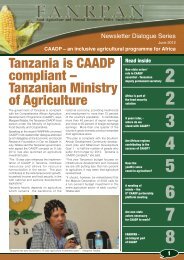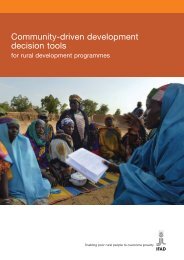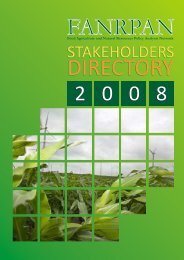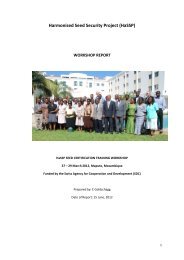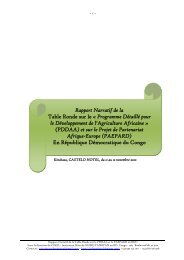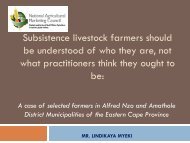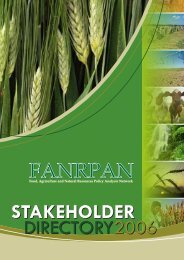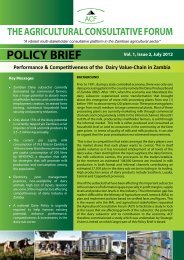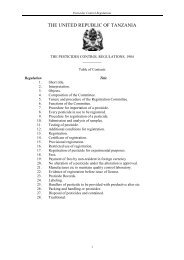1.5Mb ~ 4 min - FANRPAN
1.5Mb ~ 4 min - FANRPAN
1.5Mb ~ 4 min - FANRPAN
- No tags were found...
You also want an ePaper? Increase the reach of your titles
YUMPU automatically turns print PDFs into web optimized ePapers that Google loves.
<strong>FANRPAN</strong>’s mediatraining beneficial -journalistsPaida MpasoJournalists attending the three-day capacitytraining at the <strong>FANRPAN</strong> dialogue in Swazilandhave hailed the organisers, saying such training isvital for the development of their journalistic skills inagricultural reporting.The training, which was organised by <strong>FANRPAN</strong>,was aimed at building capacity for journalistsand engaging them as advocacy partners indisse<strong>min</strong>ating key messages in a professional andfactual manner.Speaking during the opening session, the CEOof <strong>FANRPAN</strong>, Dr Lindiwe Sibanda said journalistshave the tools to take issues further in a society.She said <strong>FANRPAN</strong> has a lot of projects and itis very important that these projects reach theintended beneficiaries.“Through your good work, our target groupswhich include farmers, researchers, governmentofficials and the private sector will be able to knowwhat is happening, hence progress into the future,”she said.According to Sibanda there are many issues beingfaced by their stakeholders that need to come outinto the open. “For instance we have farmers whoare being robbed of a platform to express theirviews. As journalists, if such issues are broughtout, things begin to change and this is why you areimportant,” she said.One of the journalists from Kenya, Zeddy Sambu,said the training was very interactive and exciting.“Journalists have the tools to take issues further in asociety” – <strong>FANRPAN</strong> CEO Dr Lindiwe Sibanda“I liked what the trainders did. They did not assumeabout what we knew, but gave and taught useverything, it was like we were in school again.Honestly, I think this is what we need. You see,if agricultural issues are to be reported more andgain the impact that is needed, there is a need forjournalists to be trained. You simply cannot runaway from that fact,” she said.Another participant from Uganda, Grace Musimamiadded: “It was a great and a new opportunity tohave an in-depth understanding of what is goingon - hence an even better platform to increaseadvocacy on food security in the region.”HaSSP project not trackingbackwards – MpofuAckel ZwaneThe Harmonised Seed Security Project (HaSSP) isdefinitely not tracking backwards but instead thereare tangible achievements already made, Dr BellaMpofu, project coordinator, told delegates at thepre-dialogue meeting ahead of the <strong>FANRPAN</strong> foodsecurity policy dialogue in Swaziland.She noted that a number of <strong>min</strong>isters of agriculturein the region had also signed memorandums ofunderstanding to show they have a buy-in in thewhole project, thus making it move forward. Mpofualso explained that the project had been marketedat Southern African Development Community levelwhere they were welcomed by leaders.<strong>FANRPAN</strong> also announced it was aggressivelypursuing partnerships with all like-<strong>min</strong>dedimplementing agencies to leverage resources andtechnical skills.Samuel Kareithi, representing the sponsorsSDA Pretoria, encouraged <strong>FANRPAN</strong> to walkwith the vision to move forward to more countriessuch as Mozambique and Tanzania who havealready approached <strong>FANRPAN</strong> for assistance. “Asmore countries come in, a new thinking also setsin,” said Kareithi.He noted that India’s success was first to demystifyseed, therefore the region must get policies rightand link them with the broader base of seedproduction, a move that can inspire even moreplayers from the region. “Look at where arewe stuck and then evoke the power to unstuck,”he added.<strong>FANRPAN</strong> CEO Dr Lindiwe Sibanda said the2011 meeting was to provide an opportunity forstakeholders to review the current status of youthengagement in agriculture value chains, and toshare lessons and experience, challenges andopportunities in that regard.The policy dialogue was to also showcase bestpractices from across the continent in line withfive <strong>FANRPAN</strong> thematic thrusts - food systems,agriculture productivity and markets, naturalresources and environment, social protectionand livelihoods, institutional strengthening andcapacity building.Sthembile Ndema, who coordinates WomenAccessing Realigned Markets (WARM) said it wasimportant to pay particular attention to the youthbecause of their creative <strong>min</strong>d, their ability to pickon new technologies faster and that there is a nichefor them, especially in the social networking sitesand other information technology fields.“The problem recently has been engaging youth inagriculture. The problem has been engaging themat a very late stage, after college. But we mustcatch them before they reach the decision makingstage on what to pursue in college,” she said.In line with <strong>FANRPAN</strong>’s commitment to journalism training, the <strong>FANRPAN</strong> Swaziland DialogueNews is produced with the assistance of the journalists who underwent training at the dialogue.They are credited for their articles that were also submitted to the various news channels ofthe media houses they represent. The training was conducted by Junxion Communications.www.fanrpan.org · Tel +27 12 804 2966Showcasing <strong>FANRPAN</strong>’s brainchild – the household vulnerability indexEditorial teamVarious external influences like HIV/AIDS andclimate change have a marked influence onpoverty. They mainly manifest themselves in ruralhouseholds were over 70 percent of people in sub-Saharan Africa live.These people rely on rain-fed agriculture andchronic food insecurity is common amongthem. The majority of these households lackthe necessary capacity to adapt to the negativeimpacts of these external vulnerabilities.A statistical tool – the household vulnerability index– assesses a household’s external vulnerability thatresults from shocks and internal vulnerability orinability to withstand shocks. It then classifies thehousehold as low, moderate and highly vulnerable,depending on its ability to prevail.Low vulnerability classifies a household as in avulnerable situation but still able to cope. Moderatevulnerability states that a household has beenhit so hard that it needs urgent but temporaryassistance to recover. High vulnerability states thatthe household is in a situation of almost a point ofno return – but could be resituated with the bestpossible expertise.To identify and measure household vulnerabilityand to strengthen the capabilities of householdsto adapt to external hazards, <strong>FANRPAN</strong>,in partnership with the University of Vendaand World Vision Swaziland researchedthe community of Mpolonjeni – a stop on the<strong>FANRPAN</strong> field trip. The research team mappedout the various needs to tailor aid accordingto the needs of households. The documentedresearch maps out the different households in theMpolonjeni community, across the three householdvulnerability index categories – low, medium andhigh - and the differentiators.Vulnerability mapping will go a long way in infor<strong>min</strong>ghow interventions should be targeted to alleviatepoverty and address food security issues.6<strong>FANRPAN</strong> 2011 Food Security Regional Policy Dialogue


